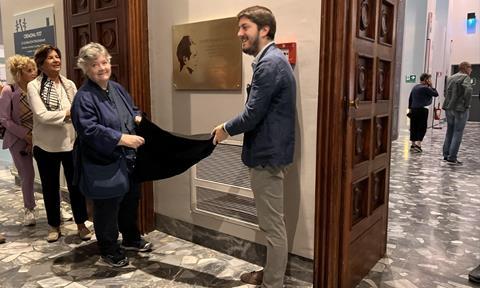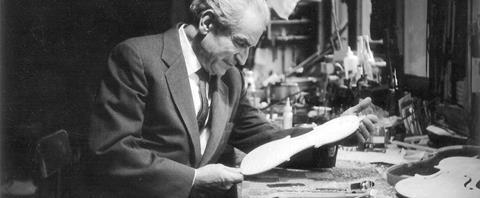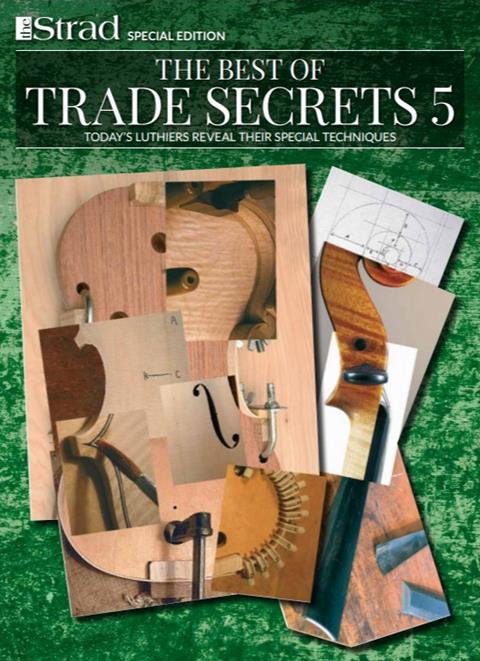The influential Italian luthier and scholar died 50 years ago at the age of 78

Read more news stories here
The Museo del Violino in Cremona, Italy, has dedicated a room in the museum to luthier Simone Fernando Sacconi. The dedication was part of a series of events marking 50 years since the death of the influential violin maker and scholar, who passed away on 26 June 1973 aged 78.
‘Museums are repositories of memories,’ said museum general director Virginia Villa, ‘and cities need to remember those people whose presence has given them important contributions. Cremona could not forget Simone Fernando Sacconi.’ The plaque was unveiled by Wanna Zambelli, a former student of Sacconi and ex-tutor at the Cremona Violin Making School, and luthier Marco Vinicio Bissolotti.
The dedication also marked the conclusion of an exhibition devoted to Sacconi’s life and work, which has run since June. Curator Fausto Cacciatori remarked that the information panels about Sacconi would remain displayed in the room, ‘and will continue to tell the story of Simone Fernando Sacconi and his contribution to 20th-century Italian violin making and the rebirth of the Cremonese school.’
In 1972 Sacconi was granted honorary citizenship of the city of Cremona, recognising his contribution to Italian lutherie as well as his scholarship; he had been responsible for cataloguing the artefacts from Stradivari’s workshop that had previously been granted to the city by Giuseppe Fiorini. The year 1972 also saw the publication of his groundbreaking work I ‘Segreti’ di Stradivari (The ‘Secrets’ of Stradivari), which revealed the production methods of the master luthier.

Born in 1895, Sacconi began as a workshop assistant to Giuseppe Rossi, and gained particular recognition through his talent for making copies. He was one of the main organisers of the Stradivari Bicentenary events in Cremona in 1937, where he was on the selection board for historical instruments, and won a gold medal for a quartet. In 1938 he declined the offer to run the Violin Making School. In 1951 he moved to New York to work for Rembert Wurlitzer, where he built up a workshop containing some of the best makers and repairers in America. Among those who worked with him were Charles Beare, Max Moller, Pierre Vidoudez, Dario D’Attili, Hans Weisshaar, Anthony Wrona, Jacques Francais, Frank Passa, Bernard Millant, Mario D’Alessandro, Harry Duffy, René Morel, William Salchow, Hans Nebel, Vahakn Nigogosian, Carlos Arcieri, David Segal, Carleen Hutchins and Francesco Bissolotti.
Read: In Focus: A 1939 Simone Fernando Sacconi viola
Read: A fresh look at Sacconi’s varnish research
Read more news stories here
An exclusive range of instrument making posters, books, calendars and information products published by and directly for sale from The Strad.
The Strad’s exclusive instrument posters, most with actual-size photos depicting every nuance of the instrument. Our posters are used by luthiers across the world as models for their own instruments, thanks to the detailed outlines and measurements on the back.
The number one source for a range of books covering making and stinged instruments with commentaries from today’s top instrument experts.
American collector David L. Fulton amassed one of the 20th century’s finest collections of stringed instruments. This year’s calendar pays tribute to some of these priceless treasures, including Yehudi Menuhin’s celebrated ‘Lord Wilton’ Guarneri, the Carlo Bergonzi once played by Fritz Kreisler, and four instruments by Antonio Stradivari.













































1 Readers' comment